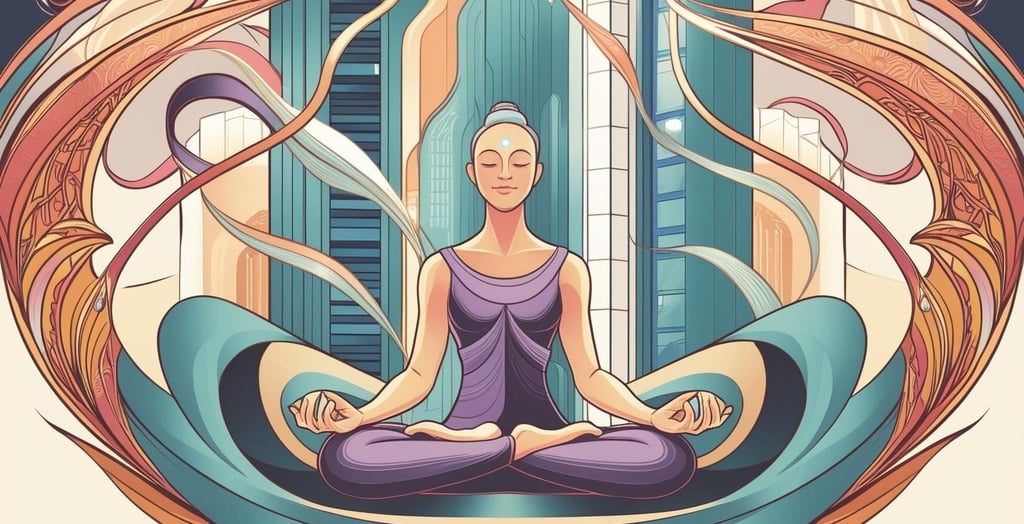Mindfulness in the Modern World: How Being Present Can Transform Your Life
Learn how mindfulness can reduce anxiety, improve focus, and enhance well-being. A complete guide to practicing presence in a distracted world.
5/1/20252 min read


Explore the deeper meaning of mindfulness, the science behind it, and how to integrate it into your daily routine for clarity, balance, and emotional resilience.
The Epidemic of Distraction
We live in an era where attention has become currency. Platforms compete for fragments of our focus — and often win. The mind, overwhelmed by digital noise, stays in a constant state of fragmentation. We fall asleep thinking about work, eat lunch while replying to messages, and before we know it, life becomes a background screen: always on, but never fully seen.
Being busy has become a trophy. Being present, a luxury.
And in this scenario, mindfulness becomes an act of rebellion.
What Mindfulness Really Is
Mindfulness isn’t a trendy buzzword or a mystical ritual.
It’s the foundational human skill of being fully present — with openness, curiosity, and non-judgment.
It’s observing thoughts without being consumed by them.
It’s noticing the moment without reacting impulsively.
It’s developing a level of awareness so deep that you begin to inhabit the moment instead of just passing through it.
This conscious presence — when cultivated daily — is radically transformative.
It’s the gateway to reconnecting mind, body, and purpose.
The Science Behind the Practice
Neuroscientific research confirms that regular mindfulness practice literally changes the brain. Areas responsible for attention, emotional regulation, and empathy grow. The amygdala, linked to fear and stress, shrinks in activity.
Proven benefits include:
Reduced anxiety and depression
Improved focus and productivity
Increased emotional resilience
Relief from chronic pain and insomnia
Strengthened immune system
And perhaps most importantly: the reclaiming of the now as a place to live, not just to pass through.
How to Integrate Mindfulness into Real Life
True mindfulness isn’t confined to meditation cushions. It lives in the everyday.
🕰️ Micro-Practices for Daily Presence:
Upon waking: notice the sounds before reaching for your phone.
While drinking coffee: taste consciously. Feel the warmth, savor the smell.
In traffic: breathe. Feel your body. Don't resist the moment.
In conversations: listen without rushing to reply. Be all in.
These brief rituals, done consistently, build depth.
It’s not about stopping everything to meditate, but about turning ordinary moments into portals of awareness.
The Real Struggles: Why Mindfulness Feels Hard
Because the mind has been trained to flee the present.
We’re addicted to speed, stimulation, and doing.
Being present requires facing silence, boredom, raw emotion.
Practice isn't always comfortable. But it is freeing.
Mindfulness reveals before it heals. That’s what scares us.
That’s why the approach must be kind.
Losing focus is part of it. Forgetting to breathe is part of it.
What matters is learning to remember to remember.
Mindfulness as a Way of Life
When mindfulness is integrated as a lifestyle, it transforms everything:
Relationships, decisions, self-care, work, purpose.
You begin to move with more presence.
Speak with more clarity. Work with more focus. Love with more depth.
You begin to live, instead of just exist.
This silent shift radiates outward. People feel it. Your energy changes.
Your mind becomes less of a battlefield, more of a sanctuary.
Conclusion: The Now as a Path
Mindfulness isn’t about controlling the mind.
It’s about being with it, even when it’s unsettled.
It’s not about perfection — it’s about presence.
It’s not about silencing thoughts — it’s about watching them without obeying.
In the modern world, mindfulness is a return to self —
A reconnection with others, and a reunion with the most powerful moment of all: the now.